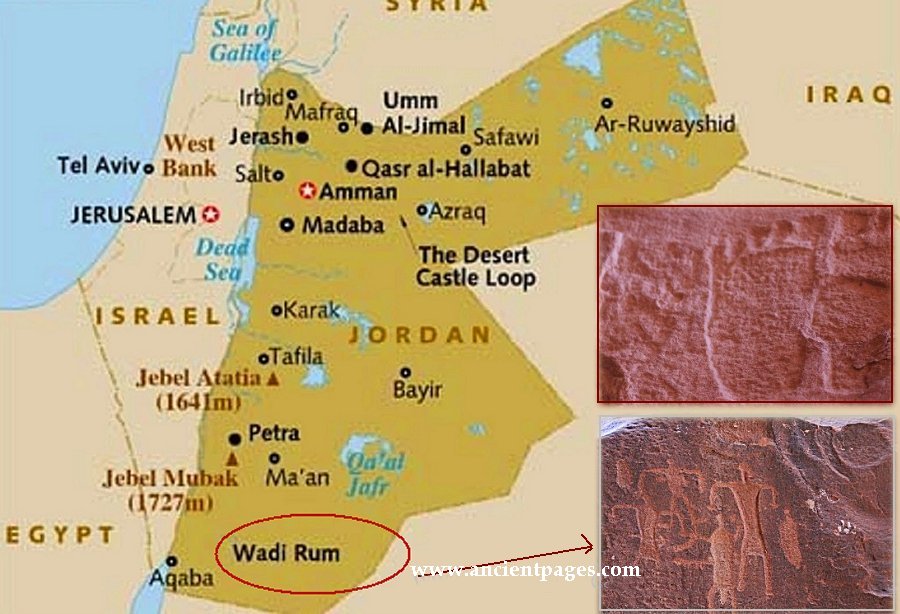A. Sutherland - AncientPages.com - Thousands of Thamudic petroglyphs are scattered all over the area of the Wadi Rum, just south of the famous rose-red city of Petra, in the southern part of Jordan.
Wadi Rum is located east of the Rift Valley and south of the central Jordanian plateau, with spectacular towering cliffs, amazing arches, and red dunes forming the Jordanian desert landscape.
This region was once inhabited by the Thamud people, a nomadic tribe related to the enigmatic and mysterious Nabateans.

Wadi Rum was used by the Nabateans as part of their trading routes, but it is largely known today because of the work of Lawrence of Arabia with the tribes of the area in World War I. The movie Lawrence of Arabia was partly filmed here.
The Thamud people lived in the Wadi Rum from at least the 800s BC, although very little is known about their identity. According to the Greek historian Diodorus Siculus’s records, they are referred to as Arabs.

The sandy valleys of Wadi Rum are located on average around 1000 meters above sea level. That is why the temperatures are cooler than in the eastern desert plains of Jordan, the Red Sea and the Jordan valley. Wadi Rum is characterized by a dry climate.
The petroglyphs the Thamud people left, include human figures (some depict hunters with arrows and bows), horses, camels, ibex, and plenty of different symbols, along with circles and lines.
The petroglyphs inform us about the climate change that occurred that devastated agricultural, pastoral, and urban human activity in this part of the world.
About 25,000 petroglyphs and 20,000 inscriptions, mostly Thamudic, were also probably intended as messages and information for other tribe people passing through the desert. Still, they are considered an important testimony of the cultural traditions of Wadi Rum's early inhabitants.
Ever since prehistoric times, many humans of different cultures inhabited the Wadi Rum desert in Jordan and the petroglyphs and inscriptions constitute the evidence of the 12,000 years of human occupation in Wadi Rum.
This unique prehistoric area is on the UNESCO's World Heritage List.
Written by – A. Sutherland - AncientPages.com Senior Staff Writer
Copyright © AncientPages.com All rights reserved. This material may not be published, broadcast, rewritten or redistributed in whole or part without the express written permission of AncientPages.com






